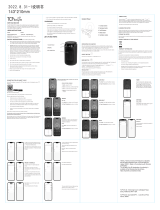
Device Manager installation and setup
Review the results and if necessary, modify the server details. If a
Test Connection error appears, then refer to Troubleshooting SQL
connection error.
5
Select OK.
6
Verify the connection settings:
a) Go to System > System Settings > Database Connection.
b) Depending on your database type, confirm the following:
Database type Settings
Internal database Server: (local)
Port number: 0
External database Depending on your database server
information, make sure that Server, Port
number, User ID, and Password are correct.
Troubleshooting SQL connection error
A connection error between your SQL Server and Device Manager application may be
due to certain permission or environment settings.
1
In SSMS, make sure that the Remote connections setting is enabled.
a) In SSMS Object Explorer, right-click your database server instance, and
then select Properties.
b) In Server Properties, select Connections.
c) In Remote server connections, make sure that Allow remote connections
to this server is selected.
In Device Manager, repeat Test Connection. If the problem persists, then go to
the next step.
2
Check the port and SQL browser service.
a) In TCP/IP Properties, go to IP Addresses > IP1, and then take note of
the TCP Port.
b) Open that port in Firewall, and confirm that it is not blocked.
c) In Windows, open Computer Management, and then go to Services and
Applications > Services.
d) Search for the SQL Server Browser service, and make sure that Status is
Running and Startup Type is Automatic.
• Double-click SQL Server Browser, and then in Startup Type, select
Automatic.
• If Service status is not Running, then select Start > OK.
e) Right-click SQL Server Browser, and then select Restart.
In Device Manager, repeat Test Connection. If the problem persists, then
contact support.
4-4 Installation and Upgrade Guide





















